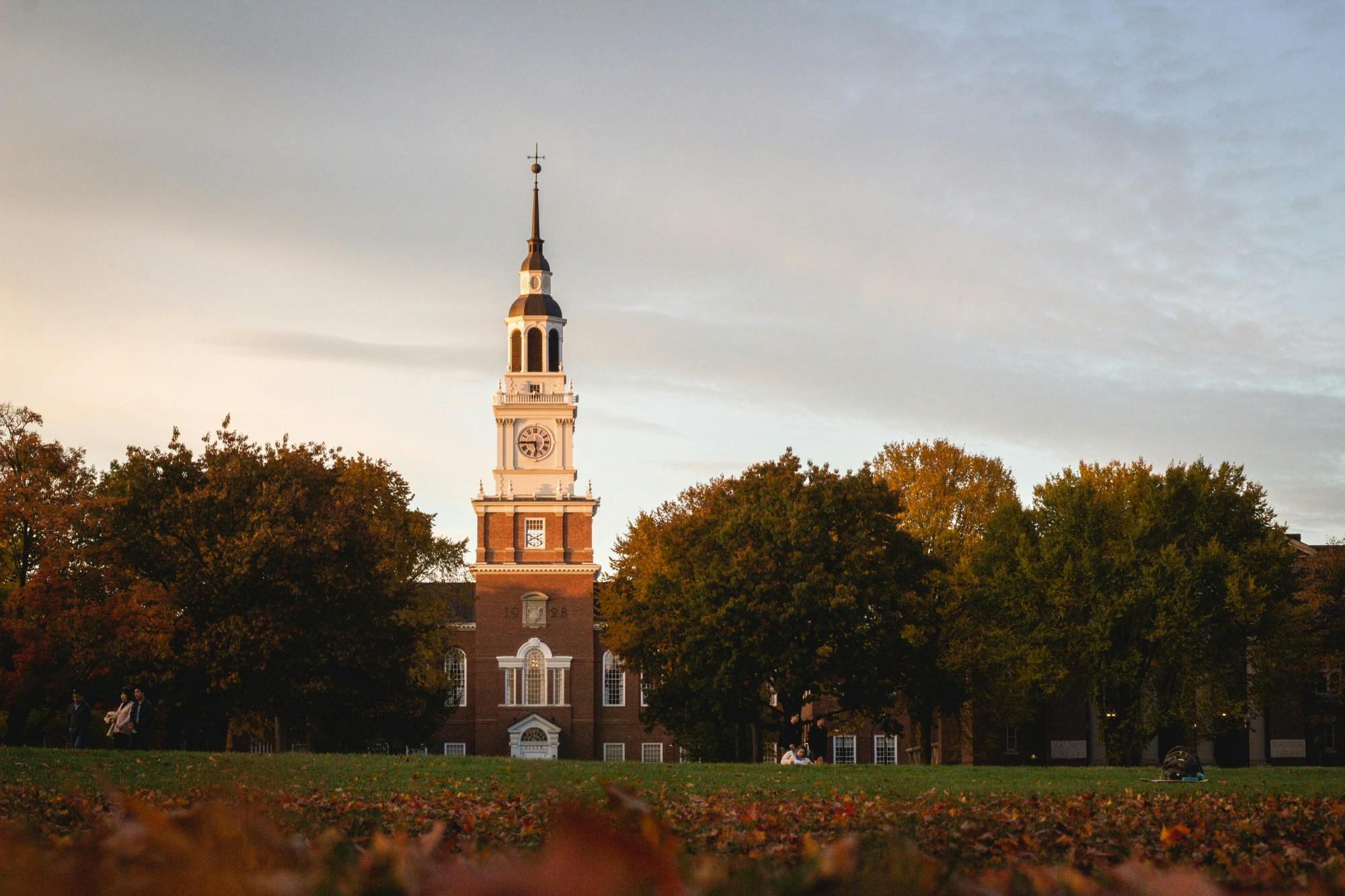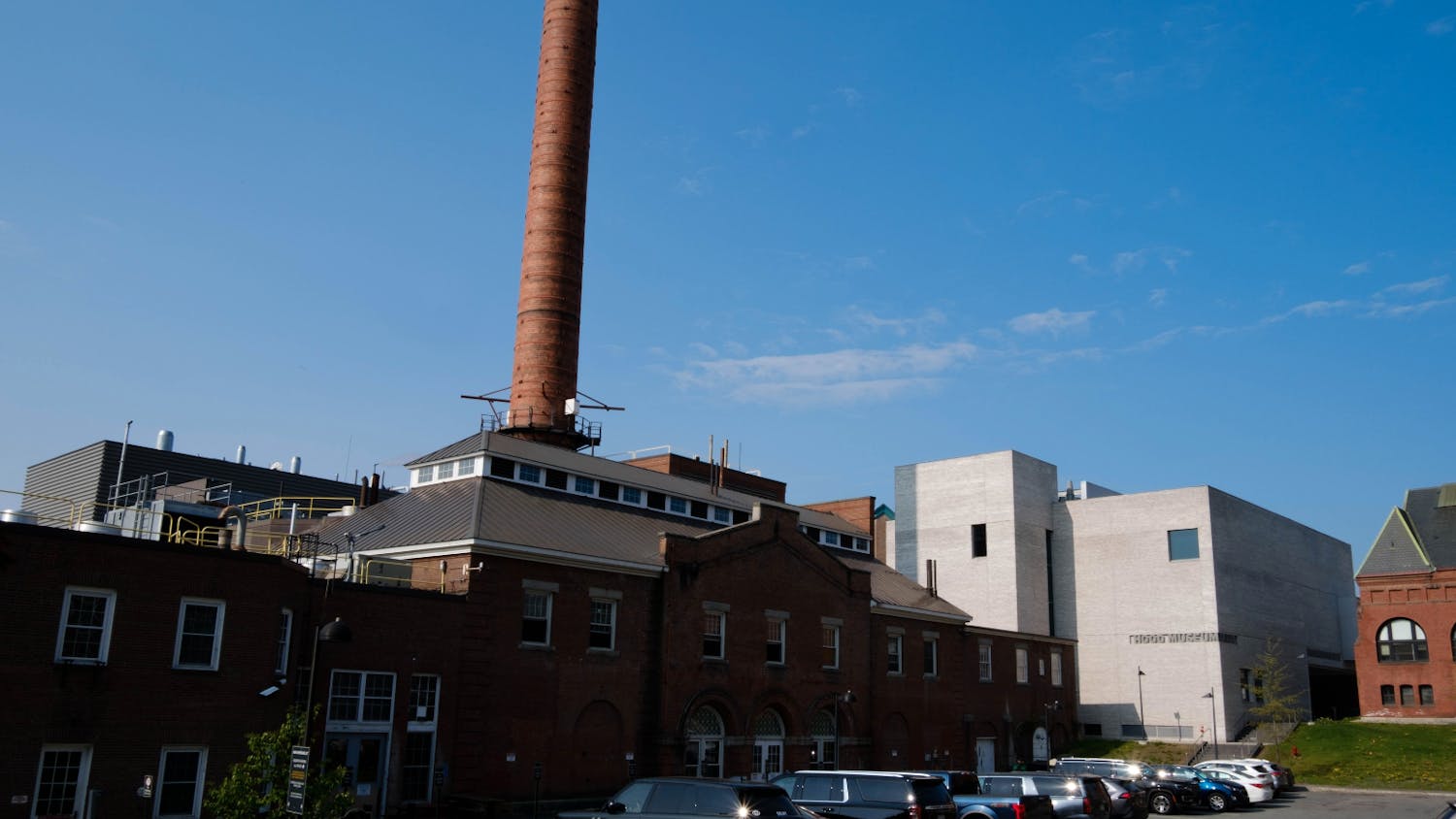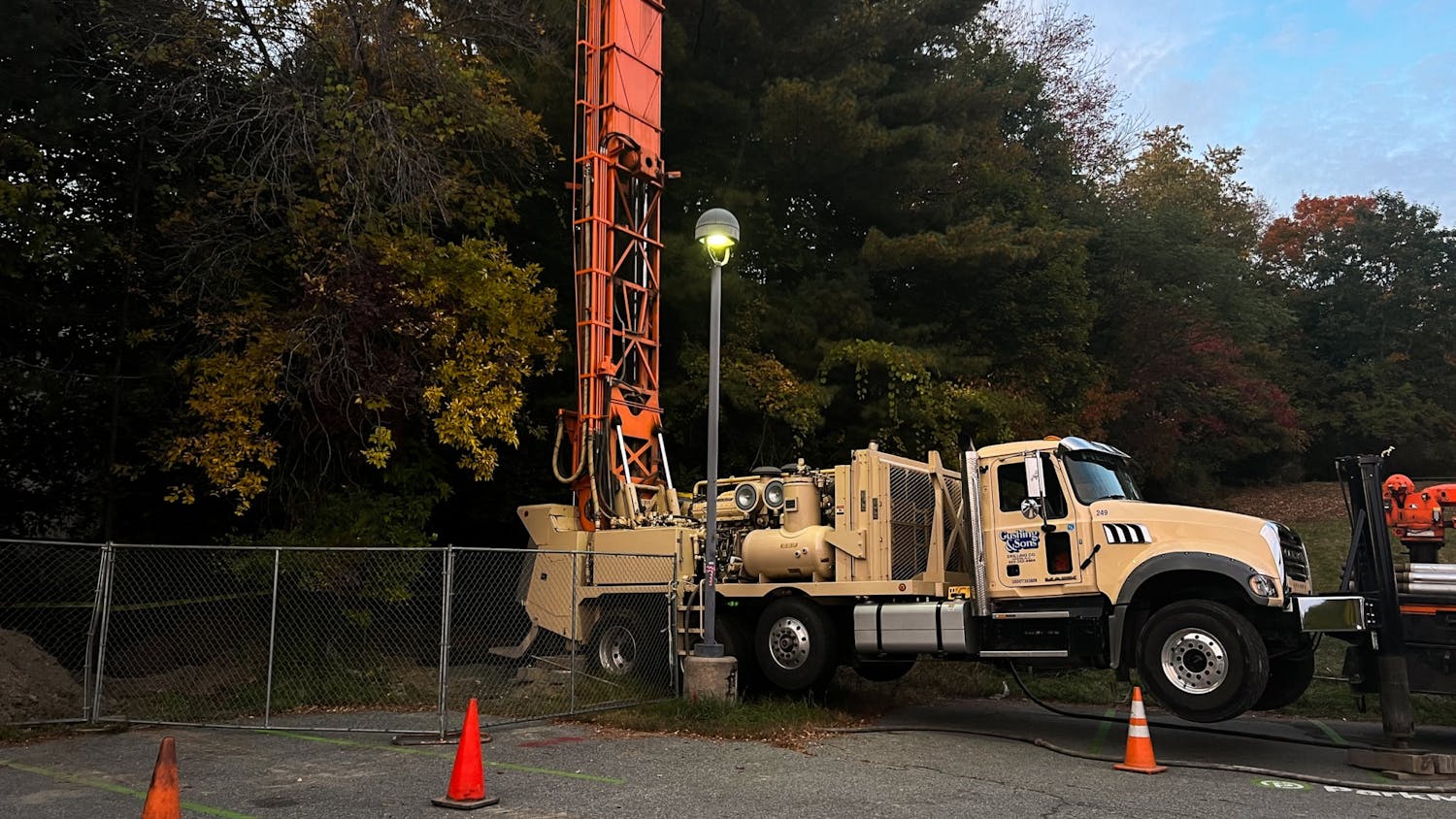The Green is a part of everyone’s daily life at Dartmouth. We walk across it everyday, play Spikeball on it, lounge under the sun on it and eat our Green2Go on it. So much happens on the Green everyday, but what exactly is underneath it?
If you started digging a hole on the Green, you would soon come across a steam tunnel that sits beneath the hundreds of pounds of soil and grass. The tunnel connects to the heating plant behind New Hampshire Hall, which provides energy to all of campus for lights, heating and air-conditioning systems, refrigerators and more.
According to Bill Riehl, who has been the manager of the heating plant for nearly 30 years, the plant is one of the oldest continually operated cogeneration — heat and electricity — plants. The plant makes high pressure steam in the boilers for heat and distributes low pressure steam to campus, making electricity.
Described as “Dartmouth’s hardest-working building” by Scott Meachem in his 2008 book “Dartmouth College: An Architectural Tour,” the heating plant is credited to Benjamin Ames Kimball. After Kimball joined the Board of Trustees in 1895, he and his collaborators came up with the idea for the heating plant and the tunnel system and made these a reality in 1898, Meachem writes.
Over the years, the heating plant and the tunnels have seen many changes, according to Riehl.
“We used to burn coal, but since 1958, we burn number six oil,” Riehl said. “The tunnels were built in the early 90s as walking utility units, and prior to that, just like the other two thirds of steam distribution on campus that are not heated through the tunnels, it was direct buried piping, going from manhole to manhole.”
Originally, the heating plant contained “a battery of four 125-horsepower horizontal boilers,” Meachem writes. Now, the boilers at the heating plant generate “almost half of the school’s electricity and [heat] about 100 buildings.”
Meachem also writes that the plant used to be managed by “firemen shoveling in eight-hour shifts.” However, Riehl explained that nowadays, besides him, “there are 14 union guys that maintain the plant.”
According to Riehl, the heating plant is self-sufficient out of necessity because of the limitations posed by Dartmouth’s rural location and lack of external resources. Riehl explained that the major downside to the heating plant is that it’s not sustainable, and it uses number six oil — a fossil fuel.
“The future of Dartmouth energy is not this plant anymore,” he said. “It’s still here, and it will be here for another 10 to 30 years until it’s completely phased out.”
Depending on where you are on campus, the steam tunnels may be right under your feet at any given moment. Riehl showed me the path the underground tunnels take. We started in front of the heating plant, then made a right and walked between Wilson Hall and New Hampshire Hall. If we could have kept going, we would have walked under Wheelock Street, under the Green and towards Rauner, ending at the Geisel School of Medicine. Essentially, we would have covered almost all of Dartmouth’s campus.
Riehl also explained the magnitude and purpose of the tunnels.
“A big pipe leaves the basement, and then there is three miles of distribution piping going West, East and North,” Riehl said. “It supplies steam to all the campus buildings for heat, hot water, humidity control, and in rare instances, nowadays, they can use steam to make chilled water for air conditioning.”
Riehl highlighted how they have two different steam systems and are always prepared for the worst case scenario: one of the systems failing.
“If anything happens, we can find an alternate means to keep producing steam,” he said.
Abbe Bjorklund, Dartmouth engineering and utilities director, shared her hopes for the future of Dartmouth’s heating. Bjorklund said her coworkers have been working on transitioning away from using steam to heat campus to using low temperature heating.
Some buildings, such as Rollins Chapel, the Class of 1982 Engineering and Computer Science Center and Anonymous Hall, have already transitioned to this new system, according to Bjorklund. She added that the usage of geothermal energy, heat energy directly from the ground, will also be implemented into these systems.
“The plan will be to generate both hot water and chilled water — which is what we use for air conditioning from heat pumps — and have those linked to geothermal well fields,” Bjorkland said. “[These] will take heat from the ground in the winter to heat the buildings, and put heat into the ground in the summer.”
According to Bjorklund, this shift will result in our campus generating “less than 20% of the greenhouse gasses” than it generates now.
For now, the hot water used in the modern buildings is still heated by steam. Ella Briman ’25 and Pia Alexander ’25 — both students in ENVS 12, “Energy and the Environment” — said their class took them on a tour of the tunnels, during which they learned about the inefficiency of number six fuel to heat Dartmouth’s campus.
It will take up to a decade to transition to a complete water-heated, geothermal campus, and this will cause a major disruption to campus life, according to Bjorklund. While the current heating system has lasted for about 100 years, the engineering and utility teams are creating a new system that is going to be low-carbon, low greenhouse-gas and low energy costs.




